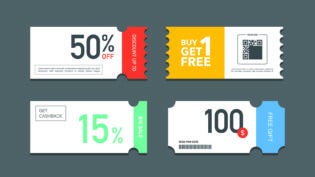Selling to Whole Foods: 6 Steps to Success
By: Immpreneur

 Getting your product into national chains is never easy, but the rewards are big if you are persistent. The following steps will put you on the road to success.
Getting your product into national chains is never easy, but the rewards are big if you are persistent. The following steps will put you on the road to success.
1) Check out your local store
Your first assignment is to do a little market research: find out whether your local Whole Foods sells anything similar to your product. If it does, that doesn’t mean you shouldn’t still try to sell them on your product. However, you may need to find ways to differentiate your product from the others in its category.
Tip: “A lot of vendors who are selling food products that originate in their home country, or which are made from old family recipes, actually have an incredible marketing advantage: there is usually a compelling story behind the product. So, if you have such a story, by all means, tell it! Customers get really inspired by that sets a product apart from all the others on the shelves, and they tend to want to and support such products.”
2) Find out whether the national organization, regional office, or your local store is your first point of contact
Whole Foods has a highly decentralized operation, and different regions of the country have varying systems for assessing new products. So, what works in Texas might not be ideal for New Jersey, and vice versa. Contact your local store and regional office to find out the best way to proceed.
3) Identify and sell to the right buyer
It’s a waste of time trying to sell to a person who can’t buy. Make sure you identify and direct your selling efforts to the right buyer. Each Whole Foods region has the following Coordinators/Buyers for different categories of products:
- Grocery, which includes dry goods, dairy, frozen, & general merchandise
- Nutrition, which includes supplements and personal care
- Prepared Foods
- Produce
- Meat
- Seafood
- Specialty, which includes cheese, beer, & wine
All new items must be submitted to the regional office(s)
Tip: “I would say you should check with your local store, asking for the grocery buyer, to find out the best way to proceed. Remember: If you do that, it ‘s always a good idea to bring your product with you. And also call your regional office to see what they recommend. Ask for the regional buyer who manages the category in which you’d like to sell your product. For instance, if you have a packaged good item that would potentially be carried in the grocery aisles, you would need to ask for the regional grocery buyer.”
–Errol Schweizer, Whole Foods’ executive global grocery coordinator. Read his in depth advice on how to sell to Whole Foods here.
4) Prepare a presentation
If you’re invited to pitch your product to Whole Foods, prepare a presentation that covers all aspects of the product:
* ingredients
* nutritional information
* your background
* plans for marketing and production
During the meeting, buyers will not only want to hear about these key element of your business plan; they will also be looking for evidence of passion and commitment.
5) Be prepared to fine tune your product
You may be told immediately that you’ve been accepted into Whole Foods or not. But, just as likely, you may be asked to make changes, such as adding different ingredients to product, or changing your packaging approach. If so, it’s important to follow through in a timely manner, and arrange another meeting for further evaluation.
6) Run frequent demos—and work closely with store personnel
Once Whole Foods accepts your product, the next step will be to demonstrate your products in their stores in order to gauge customer reactions. And at some point, you’ll most likely have to find a distributor, probably one recommended by Whole Foods. At this point, be sure to check regularly to see that the shelves are stocked with your product. The more closely you work with store personnel, the more product you’ll sell, and the more successful your new business will be.
This article was originally published by Immpreneur
Published: November 21, 2013
2509 Views
2509 Views














